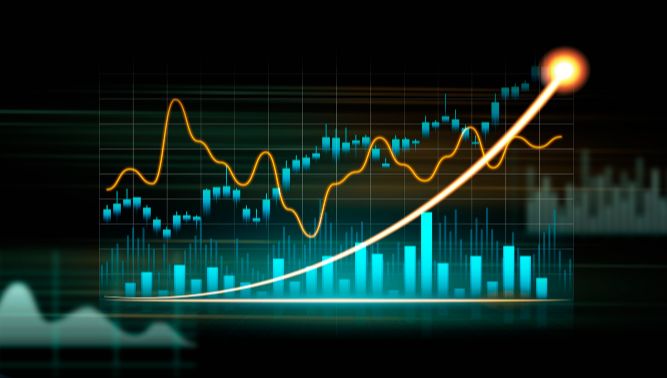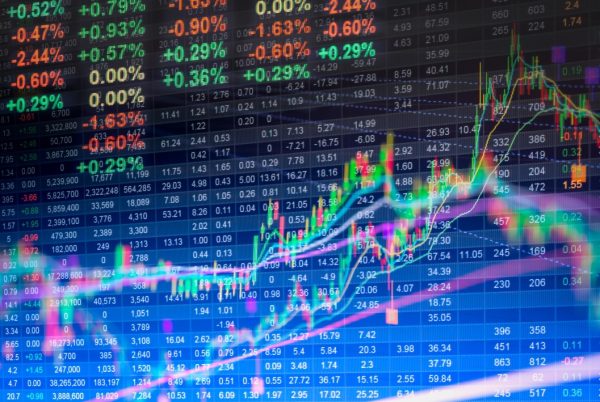Patrick St. Denis, CAIA, Senior Portfolio Manager, Multi-Manager Solutions
November 6, 2023
Despite an annualized initial US GDP print of 2.1% for the second quarter and the “advanced estimate” report of 4.9% for the third quarter, the future of the US economy and additional growth drivers for GDP and the stock market remains uncertain. Additionally, the Ukraine-Russia War, the Middle East conflict and a growing annual US deficit add to the uneasiness. According to the Bureau of Economic Analysis, “the third quarter’s GDP increase primarily reflected increases in consumer spending and inventory investment. Imports, which are a subtraction in the calculation of GDP, increased.” In speaking to other global asset managers, India and Vietnam could be interesting growth opportunities, as industrial production has shifted away from China. The MSCI World NR Index was down -3.5% in the third quarter, driven by weak performance in August and September. Like the MSCI Index, the S&P 500 TR Index had a negative return, but the ICE BoA US High Yield Index rallied in the third quarter finishing -3.3% and +0.5%, respectively. October showed no relief and sent the MSCI World Index down another -2.90%, leaving its year-to-date at +7.9%. October earnings announcements from the Magnificent Seven1 mega-cap stocks, which held up the S&P 500 Index performance year-to-date, also cracked, with shares of many down more than 5% in response, and Tesla down as much as -20%. Coinciding with this market drawdown that started in mid-October, the 10-year Treasury Bond hit 5% before quickly retreating. Perhaps 5% is the new trigger level?
Lacking from the Federal Reserve’s talking points is the topic of cutting short-term rates. However, with the recent move in yields, the shape of the backend of the yield curve, from “2 Years” and beyond has flattened dramatically, as shown the in graph below comparing the yield curve from June 30 of this year with October 31. We believe this indicates that the market may be coming to terms with the Fed’s language that rates remain higher for longer than anticipated, to fight the remaining pesky inflation.

So, with all this uncertainty, recent market drawdown and positive year-to-date performance from indices, how are the brethren of asset managers faring who get paid to take advantage of stocks’ upsides, but also their shortcomings?
According to Hedge Fund Research (HFR)¹, total global hedge fund capital surpassed $4.0 trillion in the third quarter, an increase of over $59 billion from the end of last quarter. During the previous quarter, market volatility led to a narrow decline in assets for what HFR refers to as Equity Hedge (Equity Long/Short), decreasing by an estimated $5.1 billion to end the third quarter of 2023 with $1.13 trillion of total capital according to HFR.
According to Goldman Sachs Prime Brokerage estimates (chart below), fundamental equity long/short managers outperformed the MSCI World Index (MSCI) for the second consecutive month in October, breaking their recent trend of underperformance and generated nearly +2.0% of risk-adjusted alpha over that time. The managers’ -2.6% weighted average return for the two months, compared to -7.2% for the MSCI, was mostly influenced by beta losses (net long market exposure) but offset by short alpha in September and October. Overall risk-adjusted alpha for fundamental long/short managers stood at +1.1% year-to-date through October. Despite the positive year-to-date risk-adjusted alpha for these fundamental managers, their year-to-date weighted average performance is just +3.1%, well behind broad market indices.

Note: Statistics are versus the MSCI World Index. Source: Goldman Sachs Prime Brokerage, as of 10/31/2023.

Source: Goldman Sachs Prime Brokerage, as of 10/31/2023.
On the flip side, systematic long/short equity managers positioning throughout much of the year resulted in a positive weighted average return of +15.1%, +13.6% of risk-adjusted alpha, continuing their 2022 hot streak. Excluding beta, fundamental L/S positive risk-adjusted alpha in the third quarter and October was driven by short-side gains, as long book alpha ended relatively flat. Short alpha for the year flirted with positive territory in September but pushed through in October resulting in positive net alpha for the year, again driven almost entirely by short-side gains. As measured by Goldman Sachs, gross exposure for these fundamental managers ended October at 187%, while net exposure was 53%, both within 1.5% of where they ended the third quarter. While gross exposure levels are considered elevated on a 1,3- and 5-year lookback (up 9.3% year-to-date), current net exposure (up 3.0% year-to-date) is closer to mid-points for these lookback periods as indicated by the chart below. This is likely the result of managers simply adding short exposure to lower their potential market risk versus selling longs.
According to Goldman Sachs Prime Services, long/short hedge funds ended September with a significant covering of tech shorts (net buying) after six straight weeks of net selling. Additionally, in the last week of September, Goldman’s Prime book saw the largest net buying since mid-July, driven by long buys and, to a lesser extent, short-covering. We now see that this shift in positioning may have been premature by industry players, partially offset by continued strength in short-side alpha.
So, to address our original question of how these equity long/short managers are faring in 2023, it appears that their short books are doing their job and that they have only been adding to these positions while holding and cautiously adding at times to their longs. Systematic/quantitative equity long/short managers are riding a hot streak that goes back over a year now, as their lower net and more valuation-sensitive portfolios have benefited immensely from current market conditions.
¹ HFR (Hedge Fund Research) 3Q 2023 Press Release, October 23, 2023.
The views expressed are those of Spouting Rock Asset Management (“SRAM”) platform, as of November 3, 2023, and are not intended as investment advice or recommendation. For informational purposes only. Investments are subject to market risk, including the loss of principal. Past performance does not guarantee future results. There can be no assurance that any SRAM strategy or investment will achieve its objectives or avoid substantial losses. There can be no assurances that any of the trends described will continue or will not reverse. Past events and trends do not imply, predict, or guarantee, and are not necessarily indicative of future events or results. Investors cannot invest directly in an index.





